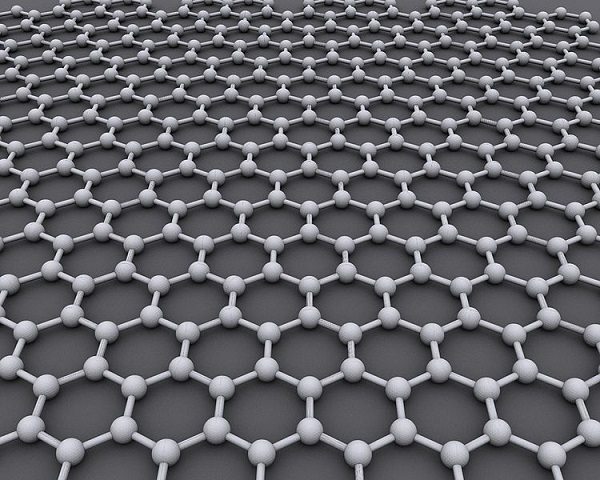
Graphene (creative commons)
Even as a flurry of new silicon has been launched recently by AMD and Arm, with more to come this week from Intel, silicon’s five decades of microprocessor dominance could start to fade in the relatively near future. The problem is that transistors etched into silicon will soon be shrunk to 5 nanometers, with 3 nanometers (15 atoms thick) a few years away – and 3nm is about as small as transistors can get. The result: researchers in academia, at big chip companies and startups are investigating new materials to support faster, more dense post-silicon, post-Moore’s Law computing.
According to a recent Wall Street Journal article, “the tech industry is in search of other wonder materials to take good old silicon’s place—or at least combine with it to vastly increase its capabilities.” These materials include graphene, black phosphorus, transition metal dichalcogenides and boron nitride nanosheets – collectively referred to as 2-D materials that are flat sheets an atom or two thick. Researchers anticipate 2-D-based microprocessors to deliver better efficiency and 10 times the power of current chips.
“In their quest, researchers must sort through all of these potential materials,” the Journal reported. “A small army is examining them in simulation and in the lab, at dozens of universities, and at IBM, Samsung, TSMC, GlobalFoundries and just about every other big chip design or manufacturing firm in the world (including Intel – editor). They’re looking for the right combination of desirable traits and manufacturability—the ability to be produced reliably in large quantities.”
Graphene is the most widely investigated of the next-gen materials, according to the Journal, because it is strong and conducts heat well – in fact, it already is used to remove heat from smartphones and their batteries.
An early example of teamwork between silicon and 2-D materials comes from Cardea Bio, a startup San Diego, which sells a “biology-gated transistor” sensor that “attaches biologically active molecules, for example certain antibodies, to a sheet of graphene, which is in turn attached to silicon. Graphene isn’t only a great conductor, it’s exquisitely sensitive to anything touching it that might interfere with its conductivity.”
“’The beautiful thing about biology is that it’s technology—there’s organized complexity to it,’” Cardea Bio Chief Executive Michael Heltzen told the Journal. “’Graphene allows the analog world of biology to be translated into the digital world that human engineers and human-built systems can manipulate and gather data from, he adds.’”

Heltzen said the biology-gated transistor could eventually be used to identify organic molecules emitted by organisms of any kind, and Cardea Bio is part of a DARPA (Defense Advanced Research Projects Agency) undertaking to create “a sensor that could detect coronavirus particles in a stream of air. Such a device inside a building could detect SARS-CoV-2, soon after anyone exhales particles of the virus. If it works, it could eventually lead to systems that could be reprogrammed to detect other pathogens,” the Journal reported.
Graphene could also be used, in combination with silicon, to create ultransensitive camers, according to Deji Akinwande, a University of Texas at Austin professor. “That’s because graphene can yield optical sensors a hundred times more sensitive to light than ones made with silicon. In addition, because it can ‘see’ in a wider range of the electromagnetic spectrum, graphene-based materials could make possible tiny, inexpensive, high-resolution infrared cameras of the sort that could fit into smartphones.”
2-D materials’ capabilities with light also could be the basis for faster data movement between chips and other system components, “hastening the replacement of electrons with photons inside microchips and communications networks.”



